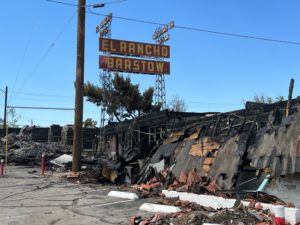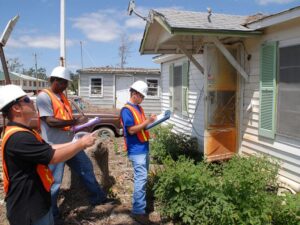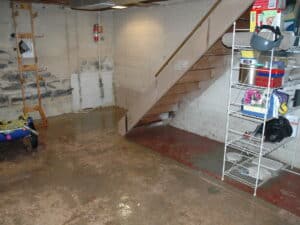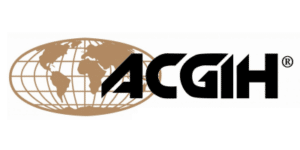Lead Abatement Laws: Knowing When Action is Required

The Critical Role of Lead Abatement in Property Management and Construction
Lead abatement involves permanently eliminating lead-based paint hazards and is strictly regulated by federal, state and local laws. It becomes necessary when lead-based paint hazards are found in pre-1978 housing or child-occupied facilities. Additionally, projects involving significant federal funding also trigger abatement requirements.
The need to tackle lead hazards cannot be overstated. Lead’s impact on health, especially on children, is profound and irreversible. Exposure can lead to cognitive impairments, including lower IQ and reading difficulties, as well as damage to organs like the liver and kidneys. The EPA highlights that “there is no safe level of lead,” and measures to control and eliminate lead hazards are essential in safeguarding public health.
When is Lead Abatement Required? A Quick Reference
Regulatory
- EPA
- HUD
- State Laws
Property Types and Dates
- Pre-1978 Housing
- Child-Occupied Facilities
Funding and Assistance Thresholds
- Federal Rehab Assistance
- Subpart J
Regulatory Triggers for Lead Abatement
Lead abatement is required under several regulatory triggers, primarily set by the EPA, HUD, and state laws. These regulations aim to reduce lead exposure, particularly in vulnerable populations specfically children.
According to the EPA‘s Renovation, Repair, and Painting (RRP) Rule, abatement is mandatory in any federally-assisted housing project exceeding $25,000 in federal rehab assistance. HUD’s Lead Safe Housing Rule (LSHR) specifies that abatement is required for projects in federally-assisted housing when the assistance per unit exceeds specific thresholds.
For instance, if a project receives more than $25,000 in federal rehab assistance, abatement is required, and the use of a certified abatement contractor is mandatory. For projects receiving less than $25,000, activities intended to permanently eliminate lead hazards are also considered abatement and require certified contractors.
Property Types Requiring Lead Abatement
Lead abatement requirements are particularly stringent for pre-1978 housing and child-occupied facilities.
Pre-1978 Housing: Homes built before 1978 are more likely to contain lead-based paint. These properties must undergo lead abatement if lead hazards are identified. This includes not just residential buildings but also rental housing and multifamily units.
Child-Occupied Facilities: Childcare centers and schools built before 1978 must also comply with lead abatement regulations. These facilities often serve vulnerable populations, making abatement crucial for safeguarding children’s health.
In New York City, for example, all pre-1960 buildings are presumed to contain lead-based paint unless tested and proven otherwise. Property owners must maintain and remediate painted surfaces, especially if children under six spend significant time in the unit.
Funding and Assistance Thresholds Requiring Lead Abatement
Federal funding plays a significant role in determining when lead abatement is required. Under Subpart J of HUD’s Lead Safe Housing Rule, different levels of federal rehab assistance trigger specific abatement actions:
- Less than $5,000 per unit: Requires interim controls to manage lead hazards.
- $5,000 to $25,000 per unit: Requires interim controls, but some activities may be considered abatement if intended to permanently eliminate lead hazards.
- More than $25,000 per unit: Requires full abatement and the use of certified contractors.
Local governments can also provide financial assistance for lead abatement, focusing on buildings with children under a certain age or those built before a specific date. Grants, loans, and forgivable loans are common forms of support. Smaller and economically distressed jurisdictions might partner with state public health initiatives to reduce lead exposure.
Example: The Biden administration’s recent proposal aims to reduce lead exposure for 250,000 to 500,000 children annually by lowering permissible lead dust levels in homes and childcare facilities. This underscores the ongoing need for stringent abatement measures.
By understanding these regulatory triggers, property types, and funding thresholds, you can facilitate successful compliance and protect public health. Lead abatement is not just a legal requirement but a critical step in creating safer living environments.
Understanding Lead Abatement
What is the Purpose of Lead Abatement?
Lead abatement is a specialized activity designed to permanently eliminate lead-based paint hazards in homes and other buildings. The EPA defines lead abatement as actions taken to address lead hazards through methods such as lead-based paint removal, enclosure, or encapsulation. Unlike Renovation, Repair, and Painting (RRP) activities, which may disturb lead-based paint inadvertently, abatement specifically targets and removes lead hazards to facilitate long-term safety.
Lead Abatement vs. Renovation, Repair, and Painting (RRP)
While lead abatement and RRP activities can seem similar, they serve different purposes and are regulated differently:
- Purpose:
- Lead Abatement: Aimed at permanently eliminating lead hazards.
- RRP Projects: Typically performed for aesthetic reasons or general repairs, not specifically to address lead hazards.
- Initiated By:
- Lead Abatement: Often mandated by government agencies or initiated voluntarily to address known lead hazards.
- RRP Projects: Usually initiated by property owners for renovation or maintenance purposes.
- Certifications:
- Both lead abatement and RRP require trained and certified professionals. However, the certifications and training for each are distinct and regulated separately by the EPA.
- Both lead abatement and RRP require trained and certified professionals. However, the certifications and training for each are distinct and regulated separately by the EPA.
- Occupant Protection:
- Lead Abatement: Requires stringent occupant protection measures and clearance testing to verify that lead hazards have been effectively removed.
- RRP Projects: Must follow lead-safe work practices to minimize lead dust but do not require the same level of post-work clearance.
Required Procedures for Lead Abatement
Lead abatement involves several critical steps for thorough and effective hazard elimination:
- Assessment:
- Lead-Based Paint Inspections: Identify the presence of lead-based paint in a property.
- Risk Assessments: Evaluate the extent and severity of lead hazards and recommend strategies for addressing them.
- Abatement:
- Abatement activities can include paint removal, encapsulation, or enclosure of lead-based paint surfaces. These actions are designed to permanently eliminate lead hazards.
- Abatement activities can include paint removal, encapsulation, or enclosure of lead-based paint surfaces. These actions are designed to permanently eliminate lead hazards.
- Clearance:
- After abatement, clearance testing is performed to measure the effectiveness of lead hazard removal. This involves collecting dust wipe samples and analyzing them for lead content. Only when these samples meet stringent EPA standards is the property deemed safe for re-occupancy.
By understanding these procedures, property owners can take the necessary steps to comply with lead abatement regulations and protect public health. Lead abatement is more than just a regulatory requirement; it is a crucial measure to create safer working and living environments for everyone.
Implementing Lead Abatement
Choosing the Best Lead Abatement Contractor for the Job
Selecting the right contractor for lead abatement is crucial. Certified professionals are a must. The EPA mandates that only certified individuals and firms can perform lead abatement in pre-1978 housing and child-occupied facilities. This certification means they have the necessary training and knowledge to handle lead hazards safely and effectively.
Safety protocols are another critical aspect. Contractors must follow strict safety guidelines, including using protective gear, setting up containment areas, and employing specialized equipment to minimize lead dust. These measures protect both the workers and the occupants of the building.
Example: In some states, companies performing lead hazard evaluation or abatement must be certified under the state’s Lead Hazard Evaluation and Abatement Code; this is so only qualified professionals handle these critical tasks.
Legal and Safety Considerations for Lead Abatement
Legal and safety considerations are paramount in lead abatement. The EPA imposes hefty fines on those who fail to comply with lead-safe work practices. Property owners and contractors must adhere to stringent regulations to avoid these penalties.
Contractor requirements are specific. Contractors must maintain detailed records of their work, including risk assessments, abatement plans, and clearance tests. These records are essential for demonstrating compliance during audits or property sales.
Example: Local Law 1 of 2004 in New York City requires property owners to document safe work practices when disturbing more than two square feet of lead-based paint in homes with children under six. Failure to comply can result in significant penalties.
The Role of Omega Environmental Services in Your Lead Abatement Project
Omega Environmental Services plays a vital role in the lead abatement process. As an experienced environmental consulting firm, we offer a range of services to facilitate compliant lead hazard management.
Environmental Consulting: Our team provides expert advice on lead hazard assessments and abatement strategies. We help property owners steer complex regulations and develop effective plans to eliminate lead hazards.
Remediation Services: We offer comprehensive remediation services, including lead-based paint removal, encapsulation, and enclosure. Our certified professionals follow rigorous safety protocols.
By partnering with Omega Environmental Services, you can trust that your lead abatement project will be handled with the highest level of expertise and care. We are committed to creating safer living environments for everyone.
Contact Omega Environmental Services Now
Lead abatement is a critical process for ensuring the safety and health of building occupants, especially in pre-1978 housing and child-occupied facilities. Understanding when lead abatement is required involves recognizing regulatory triggers, property types, and funding thresholds. Compliance with EPA, HUD, and state laws is essential for keeping a project on track.
The importance of compliance cannot be overstated. Failing to adhere to lead-safe work practices can result in significant penalties and, more importantly, pose severe health risks to residents, particularly young children. Detailed record-keeping and hiring certified professionals are crucial steps in the abatement process.
At Omega Environmental Services, we are dedicated to helping you steer these complex regulations and implement effective lead hazard management strategies. Our team of certified professionals provides comprehensive services, from environmental consulting to remediation.
Visit our Hazardous Materials page for more information on how we can assist you with your lead abatement needs.
By partnering with Omega Environmental Services, you can trust that your lead abatement project will be conducted safely and efficiently.










